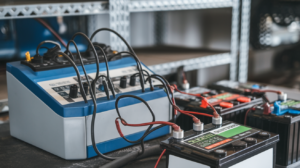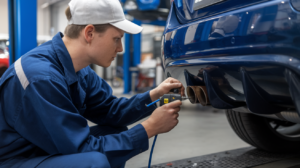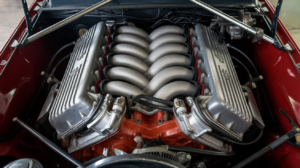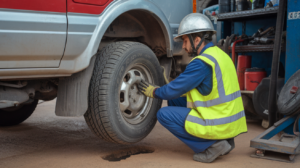Ever watched your engine temperature needle creep up in Dubai traffic and felt that jolt of panic? You are not alone. Heat is brutal here, and if your car cooling system is not doing its job, things can go south fast. Overheating engines, blown head gaskets, and sudden breakdowns,none of that is cheap, and none of it comes with a warning light that gives you enough time.That is exactly why regular checks using proper car cooling system inspection tools is more than a garage checklist,it is survival out here.
In this guide, we will walk through how to inspect car cooling system components properly, the best tools for cooling system diagnostics, and what actually matters under Dubai’s extreme conditions. Whether you’re a DIY guy or just tired of last-minute tow trucks, start with car cooling system inspection tools that actually show you what’s wrong.
Understanding the Car Cooling System and Its Role in Dubai
Ever sat in bumper-to-bumper traffic on Sheikh Zayed Road and noticed your engine temp creeping up? That silent stress builds fast, especially when the AC is working overtime and your car feels like a rolling oven. Welcome to Dubai, where your engine’s worst enemy is the weather. The car cooling system is what keeps your engine alive. It fights against all the heat being produced under the hood, and in this city, it works double shifts. From the radiator to the coolant, thermostat to the water pump, each part is doing its bit to stop your engine from cooking itself.Here’s how it works in real life:
- Radiator cools the heated coolant by letting air flow through metal fins
- Coolant (yeah, that green or pink liquid) circulates to absorb and release heat
- Water Pump makes sure that coolant keeps moving around the engine
- Thermostat opens and shuts based on temperature, helping regulate flow
- Cooling Fan kicks in when there’s no wind,like when you’re stuck at a red light
Now, here’s the catch,Dubai’s heat does not forgive small issues. A weak radiator cap or a half-clogged hose might get by elsewhere. But here? That could lead to an overheated engine in minutes. That is why proper car cooling system inspection tools are essential. They do what your eyes can’t: read pressure, detect leaks, measure real-time coolant temperature, and spot bad sensors before they fail. If you want a professional car inspection in Dubai, our experts combine advanced tools with hands-on checks for full accuracy.
Do not just look under the hood and guess. Use car cooling system inspection tools,they’re the thermometers your engine actually listens to. Use the tools. Inspect smart.
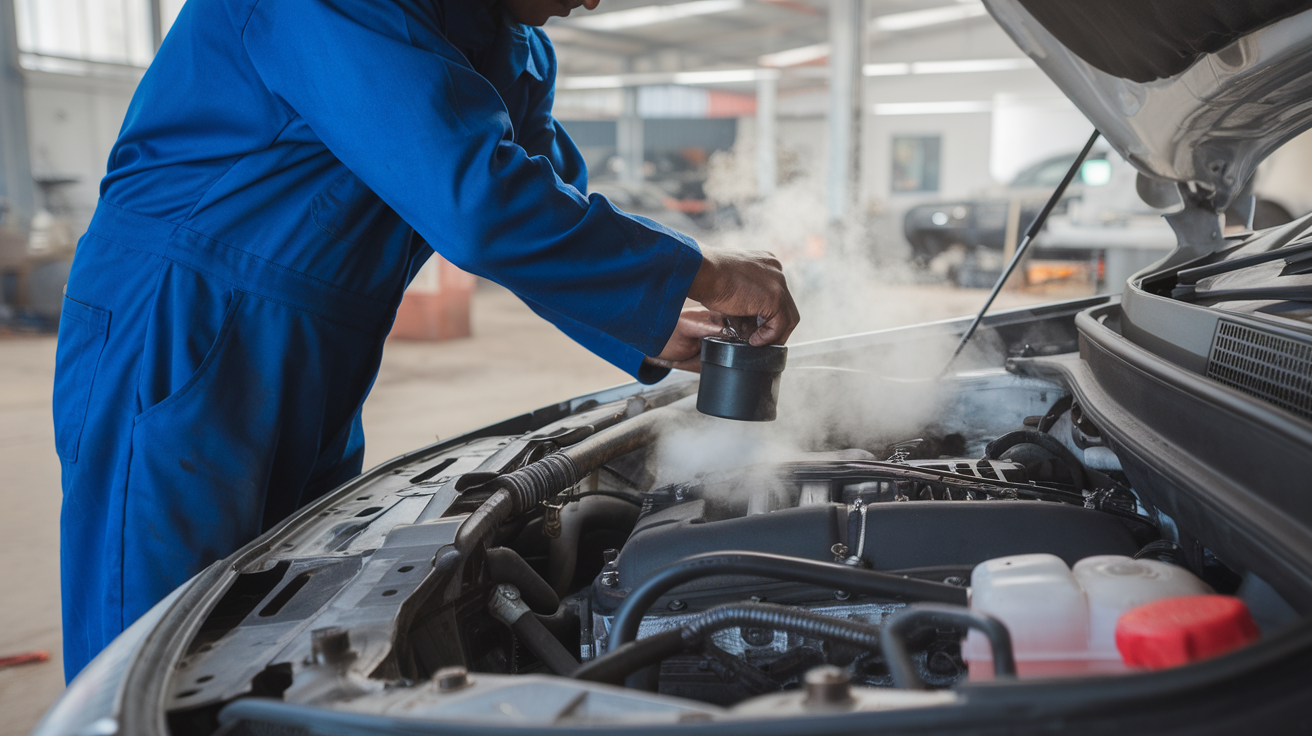
Key Components to Check During a Car Cooling System Inspection
A lot of people think checking coolant level is enough. But that is like looking at the fuel gauge and assuming your engine is fine. If you’re serious about keeping your engine cool in Dubai’s heat, you need to know which parts deserve real attention during a proper car cooling system inspection.Here’s a list of the most important components you should never ignore,especially if you’re using car cooling system inspection tools to catch issues early:
- Radiator
This is where most of the heat exchange happens. Check for rust, external debris clogging the fins, or any signs of coolant dripping down. Radiator caps can fail too,if they are not holding pressure, you lose boiling point protection. - Coolant reservoir
Look for proper fluid levels when the engine is cold. If it’s empty or overfilled, that’s a clue something’s not right. Cracks in the tank are common, especially under Dubai’s sun exposure. - Thermostat
It controls the flow of coolant based on temperature. If it gets stuck closed, your engine overheats fast. A basic infrared thermometer can help check if coolant is flowing as expected when the engine warms up. - Water pump
The heart of the system. It pushes coolant through the engine and back to the radiator. Any leak around the pump, or a squeaky noise while running, could mean it’s failing. Use a pressure tester or check for crusty residue around the gasket. - Cooling fan & relay
These kick in when your car is idling and airflow is low. If your fan doesn’t activate, especially during AC use, your coolant can’t cool off. Use a scan tool to test the fan circuit or manually trigger the relay for inspection. - Coolant hoses & clamps
These often get overlooked. Look for bulging, cracking, or softness in the rubber. Clamps can rust or loosen and cause leaks that are hard to trace without pressure testing. - Heater core
Yes, it’s for cabin heat,but it’s still part of the loop. A leaking heater core can fog up your windshield or leave a sweet smell in the cabin. That’s why our cooling system & radiator inspection service is built for Dubai’s climate, detecting leaks, weak caps, and failing thermostats before they cause overheating. Check under carpets for dampness and use UV dye if needed. - Coolant temperature sensor
If this gives false readings, your ECU can’t manage fan speed or engine load properly. OBD2 scanners can verify sensor output vs actual temperature using cooling system inspection tools.
You do not have to be a mechanic to look at these parts. You just need the right tools and a bit of know-how. Think of it like checking your own pulse,you’re not diagnosing disease, you’re spotting something off before it becomes dangerous.Always inspect, never assume. A clean engine bay might still hide a lazy thermostat or cracked hose. It is what you cannot see that ends up causing the real damage.
Tools Needed for Accurate Car Cooling System Inspection in Dubai
Just looking at your engine and guessing what’s wrong? That does not work, especially not in Dubai. In Dubai’s heat, spotting small problems before they explode means using the right car cooling system inspection tools. Here are the tools every inspection should include if you’re serious about avoiding breakdowns in the middle of Dubai traffic:
- OBD2 Scanner
This tool connects to your car’s computer and tells you if the engine is running too hot, if the coolant temperature sensor is giving weird readings, or if the fan is not kicking in when it should. It’s the first thing you should grab before popping the hood. We’ve also covered more on OBD inspection tools in our blog, explaining their strengths and blind spots during diagnostics. - Coolant Pressure Tester
This one helps you simulate pressure inside the system,without turning on the engine. If there’s a hidden leak in your radiator, pump, or hoses, this will force it to reveal itself. It’s also great for checking whether the radiator cap is still holding proper pressure. - Infrared Thermometer
Aim it at the radiator, thermostat housing, or hose connections, and it tells you exactly how hot things are. No guessing. Perfect for spotting clogged areas in the radiator or a stuck thermostat. - Refractometer or Hydrometer
Both are used to check the strength of your coolant mixture. Coolant is not just colored water,it has to be mixed right to raise the boiling point and prevent rust. A bad mix means your engine is vulnerable to both heat and corrosion. - Cooling System Vacuum Refill Kit
When you drain coolant, you do not want air pockets left inside the system. These tools help you refill the system without letting air in, which is key to avoiding overheating after a coolant change. - UV Leak Detection Kit
You add a special dye into the coolant and use a UV torch to trace even the smallest leaks.Works especially well with car cooling system inspection tools like UV dye, helping catch leaks that only show when heat builds up. - Fin Comb or Radiator Comb
Not something people think about, but bent radiator fins reduce airflow. This simple tool lets you straighten them out gently without causing more damage.
These tools are not just for workshops. If you’re doing your own cooling system inspection at home,or just want to check if a garage is doing it right,knowing how these tools work gives you control. And in Dubai, that control means the difference between smooth driving and being stranded roadside.Dubai’s heat is harsh. If you are not using real car cooling system inspection tools, you are not actually inspecting anything. You are just hoping nothing goes wrong,and hope is not a strategy.

Step-by-Step Guide to Inspect a Car Cooling System in Dubai
In Dubai, heat is not just a weather report,it’s a mechanical stress test. Your car’s cooling system is the one thing standing between smooth driving and engine failure. A proper car cooling system inspection can catch the silent troublemakers before they cook your engine.You do not need a full workshop setup. Just some practical tools, sharp eyes, and a little know-how. Here’s how to break it down like a pro.
- Start with a Cold Engine
Never begin a cooling system inspection on a hot engine. It is under pressure and can spray boiling coolant if you open the radiator cap. Let the car sit for a few hours or overnight before you touch anything. - Check the Coolant Reservoir and Hose Condition
Look for the coolant level in the reservoir. It should sit between MIN and MAX when cold. Also feel around the radiator hoses,any bulging, cracking, or softness? That’s an early warning of failure in Dubai’s heat. - Scan Live Data with an OBD2 Tool
Plug in an OBD2 scanner and check live readings from the coolant temperature sensor. This is one of the most underrated car cooling system inspection tools,it shows you what the dashboard doesn’t. Pay attention to how fast the temp climbs at idle. - Test the Radiator Fan Operation
Let the engine idle with the AC off, then turn it on. The radiator fan should kick in within minutes. No fan = no airflow = overheating. If it’s silent, check the fuse, relay, or fan motor. - Use a Coolant Pressure Tester
Pump the tester and observe. If pressure drops fast, you’ve got a leak,maybe at the radiator neck, a hose joint, or the water pump gasket. This tool takes out the guesswork, especially in hidden spots. - Watch for Air Pockets in the System
If the temperature gauge dances up and down or the heater blows cold while the engine’s hot, you might have trapped air. Use a vacuum refill tool or bleed the system slowly while the engine runs. No tools? Park the car on a slope and let it burp.
This is not about over-maintaining. It’s about preventing disaster before it happens.In Dubai, skipping proper checks with car cooling system inspection tools is like skipping sunscreen in July,painful, expensive, and entirely avoidable.
Common Cooling System Issues Found During Car Inspections in Dubai
Dubai heat is not gentle. It pushes every part of your car harder,especially the cooling system. And during inspections, some issues just keep showing up again and again. Most of them are avoidable. But only if you know what to look for,and if you are using the right car cooling system inspection tools.Here’s what we keep finding during real-world checks in Dubai garages:
- Cracked or Swollen Radiator Hoses
Over time, rubber hoses harden and crack,or worse, they swell like balloons. It is a silent failure waiting to happen. With a pressure tester, even small leaks in hoses can be spotted before they cause trouble.
- Clogged Radiators
You would be surprised how many radiators are half-blocked with dust, sand, or dried coolant. On the outside, it looks fine. But an infrared thermometer quickly shows cold spots,areas where coolant is not flowing or heat is not being released.
- Failing Water Pumps
One of the most common reasons for overheating. Leaky seals, worn bearings, or poor circulation are hard to spot by eye. A pressure test combined with visual checks helps catch early pump problems.
- Weak Radiator Cap Pressure
This tiny part controls system pressure. If it releases too soon, your coolant boils at a lower temp, and the engine suffers. With proper cooling system inspection tools, especially a cap pressure tester, you can measure this directly. If you’re curious about other pro-grade gear, check our guide on compression testers, a tool often paired with cooling checks to spot deeper engine issues.
- Unresponsive Thermostat
A thermostat that sticks closed causes fast overheating. A good scan tool paired with temperature tracking shows if the thermostat is opening at the right time,or not opening at all.
- Hidden Coolant Leaks
Some leaks only show up when the engine’s hot and under load. UV dye and a basic torch can find leaks in spots you’d never think to look,heater cores, freeze plugs, or even inside the cylinder head.
Most of these issues give off small clues. But if you are relying on just visual checks or random guesses, you will miss them. That is where proper car cooling system inspection tools come in. They do not just tell you something’s wrong,they show you where, why, and how bad.
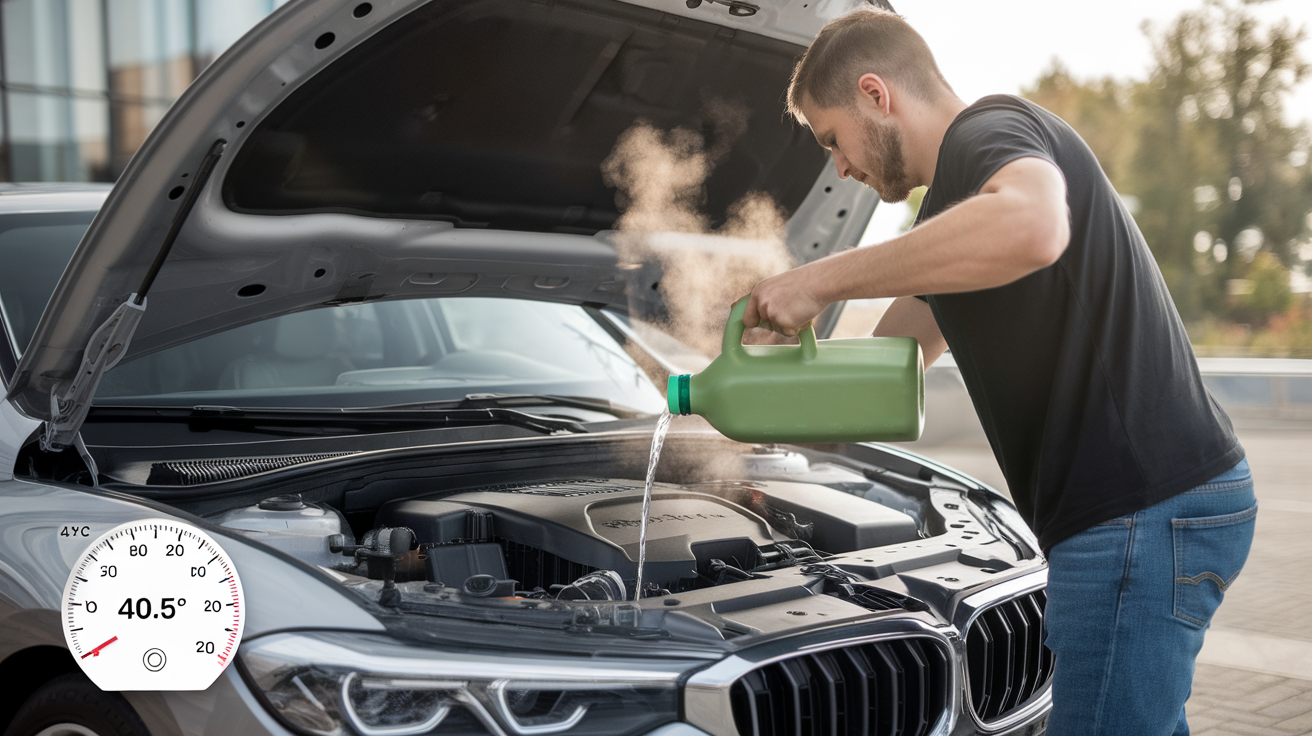
When to Inspect Your Car Cooling System in Dubai’s Climate
Dubai’s heat shows no mercy. If your cooling system slips,even a little,you are risking an engine meltdown. That is why knowing when to inspect matters just as much as how to inspect. And with proper car cooling system inspection tools, timing makes all the difference.
- Before summer begins
Don’t wait for the first heatwave. Check your system early to stay ahead of the damage. - Coolant keeps disappearing
If you’re topping it up more than once, there’s a leak. Pressure test it or use UV dye to spot it. - The temp gauge starts acting off
Climbing too high? Bouncing around? Plug in a scanner and check sensor readings. - After any cooling-related repair
Changed the radiator? Flushed coolant? You might have trapped air,use a vacuum refill tool or bleed it properly. - You smell something sweet under the hood
That smell? Coolant hitting something hot. Time to inspect,leaks love to hide. - Before any long road trip
Planning a desert drive? Check everything. Don’t trust your dashboard alone.
Dubai doesn’t give warnings. Use your car cooling system inspection tools early, before heat turns a small issue into a blown engine.
Dubai’s heat is brutal, and your engine feels every degree of it. Skipping a proper car cooling system inspection is like running a marathon in the desert without water. One clogged radiator or a stuck thermostat, and you’re watching your temp gauge hit the ceiling while traffic crawls around you. These things don’t give you a second chance,they just fail.
The fix? Use the right car cooling system inspection tools before things go sideways. Whether you’re checking it yourself or handing it over to someone who knows what they’re doing, do not wait for a breakdown. Get it inspected, catch the small stuff, and keep your engine cool when it matters most.

